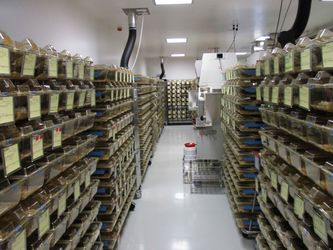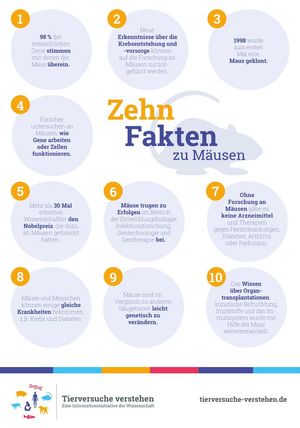The mouse as model organism
For more than a hundred years, scientists have been performing research on and with mice. Initially, this was because the animals were easy and relatively inexpensive to care for, reproduced rapidly and had brief lifespans of only two to three years. In the meantime, it has been discovered that mice share approximately 95 percent of the same genes as humans. This makes the rodents the preferred animal model for disease research worldwide. Since mice are naturally very susceptible to the development of cancer, they help, for example, with research into the causes of cancer and the development of therapeutic methods for its cure.
Wild mice vs lab mice
At the FLI, too, mice are an important animal model and are used in research on the decline in stem cell function and on aging-associated conditions such as muscle atrophy, colon cancer, among other things. Mice raised as laboratory animals differ significantly from their relatives in the wild. While wild mice are usually smaller and brown-gray in color, laboratory strains come in a wide variety of colors and sizes. Due to decades of breeding under laboratory conditions, their behavior is calmer and less aggressive than that of wild mice.
So-called inbred strains are often used in research. These arise when only siblings are bred to each other over several generations (at least 20). Animals from such strains are genetically largely identical and are particularly valuable for research because they enable comparability. Since the development of genetic engineering methods, individual genes can be specifically altered in mice and their particular function studied. The scientific results of such investigations are not influenced by genetic variability.
The FLI maintains different mouse strains that carry one or more genetic alterations. The genes that are being researched here play an important role in such mechanisms as nerve regeneration and DNA damage.











